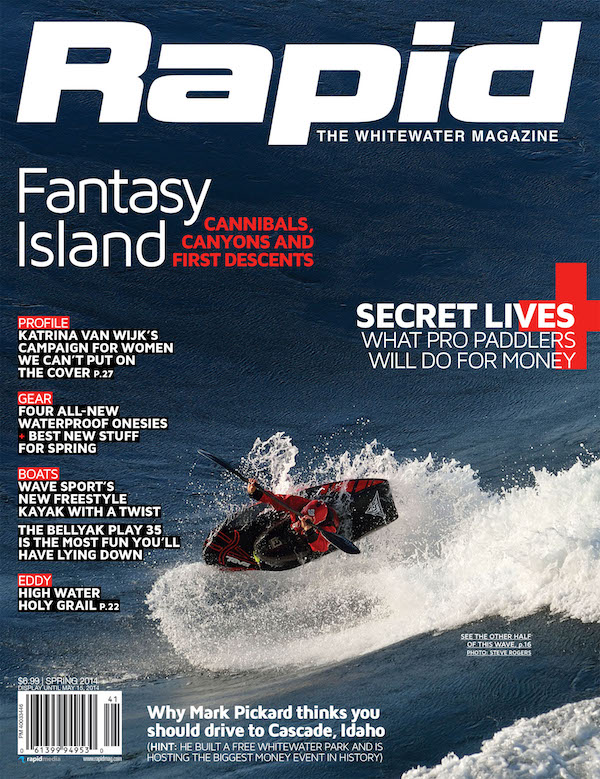This canoe trip destination article was originally published in Canoeroots and Family Camping magazine.
Many of the finest Deep South routes penetrate into the wild heart of sprawling wetlands. This is no euphemism; these aren’t the atrophied, blackfly-infested swamps familiar to northern paddlers. Instead, you’ll discover oases of towering, knuckle-kneed cypress; ghostly veils of Spanish moss; and confetti flocks of rare and exotic birds in these nutrient-rich, black water backwaters.
OKEFENOKEE SWAMP, Georgia
North America’s largest un-fragmented wetland wilderness is protected in the 700-square-mile Okefenokee National Wildlife Refuge. Paddlers exploring the refuge’s 120 miles of day and overnight water trails are rewarded with spectacular wild- life viewing including alligators, sandhill cranes, egrets, herons, ibis and the brilliantly pink roseate spoonbill. Head to the east entrance, the area least affected by a devastating 2007 fire, to paddle through unique wetland prairies, cypress forest and snowy fields of water lilies. www.fws.gov/okefenokee
ATCHAFALAYA BASIN, Louisiana
The Atchafalaya is the largest overflow swamp in the U.S. and can receive up to half of the Mississippi River’s flow, varying the water level by as much as 30 feet. It’s divided into six sectors west of Baton Rouge. The Indian Bayou paddling trails in the northwest sector offer a varied and accessible glimpse of this enormous wetland. Slip through green tunnels of cypress, black gum, native pecan and moss-draped oaks on seven marked trails ranging from 4.5 to 14 miles. www.paddlelouisianaonline.com/the-atchafalaya-river
BARTRAM CANOE TRAIL, Alabama
Don’t be surprised if you see more gators than paddlers on the 150 meandering miles of this water trail system in southern ‘Bama. Second in size only to the Mississippi, the Mobile-Tensaw Delta is a beautiful, some- times spooky wilderness of cypress-tupelo swamp and bottomland hardwood forest far removed from the Gulf of Mexico into which it spills. Venture out on one of the half-dozen day use trails or choose an over- night route and stay on a floating platform campsite. Just mind the delta’s five species of venomous snakes (water moccasin, coral snake and three varieties of rattlesnakes—in case you’re wondering). www.outdooralabama.com/outdoor-adventures/bartram/index.htm
PASCAGOULA RIVER BASIN, Mississippi
The Pascagoula flows freely through south- east Mississippi’s ancient bottomland swamps before branching into a rich net- work of channels and bayous at the Gulf of Mexico. The Pascagoula basin, including the Leaf and Chickasawhay rivers, is the last unregulated major river system in the lower 48. Listed by American Rivers as one of the top 10 most endangered rivers in 2009, this year the Pascagoula gets recognition from the National Park Service with creation of the Pascagoula River Basin Recreation Corridor, including an anticipated 81 miles of water trail from source to sea. www.nps.gov/ncrc/portals/rivers/projpg/watertrails.htm
WITHLACOOCHEE RIVER, Florida
Okay, so this route isn’t in a swamp, but if you’re paddling in the South you can’t miss northern Florida’s incredible clear water rivers. The Withlacoochee (North) River Paddling Trail begins at the Georgia state line and travels 28 miles south to the confluence with the Suwannee River, chuckling over shoals and passing limestone bluffs, white sand beaches, tupelo and cypress forest, and several campsites along the way. En route, don’t miss a dip in the crystal clear swimming hole at Madison Blue Springs State Park. End your trip at Suwannee River State Park, or keep right on paddling down the 170-mile Suwannee River Wilderness Trail. www.dep.state.fl.us/gwt/guide/paddle.htm
This article originally appeared in Canoeroots & Family Camping, Fall 2011. Download our freeiPad/iPhone/iPod Touch App or Android App or read it here.









 This article first appeared in the Spring 2014 issue of Canoeroots Magazine.
This article first appeared in the Spring 2014 issue of Canoeroots Magazine.


 This article first appeared in the Spring 2014 issue of Rapid Magazine. For more great content, subscribe to Rapid’s print and digital editions
This article first appeared in the Spring 2014 issue of Rapid Magazine. For more great content, subscribe to Rapid’s print and digital editions 

 This article was first published in the Spring 2014 issue of Rapid Magazine.
This article was first published in the Spring 2014 issue of Rapid Magazine. 